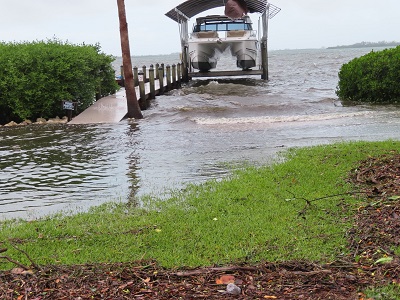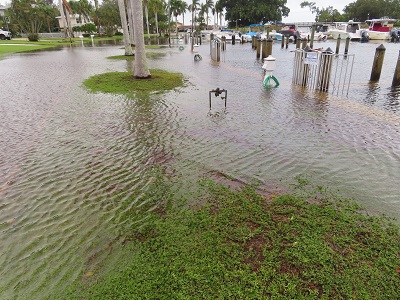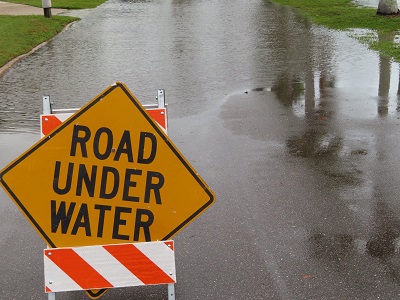Resetting the Realities of Our Climate Crisis
Reality, and one’s perception of reality, can change with a single event. An example would be the “earth rise “ photo taken by NASA astronauts in 1968. Though we knew that the earth was round, it was not until that photo that we saw it as a round planet in space.
Another might be the Florida real estate collapse due to the Great Recession of 2007-2008. Up until then, the prevalent thinking was that all Florida real estate would continue to increase in value dramatically due to the aging/retiring boomer generation. Nope. Many local homeowners had to wait until the Covid runup in prices to see their homes regain their value.
Idalia, the latest hurricane to hit Florida, might be another example. As we were about to move from Sarasota, FL to the Chicago area, we literally had the wind at our backs as the first bands of the hurricane arrived just as the movers finished packing the moving truck. Then, after two days of being sequestered in a local hotel, we flew up north.
For the entire time (eight years) that I was a full-time resident in Florida, I marveled at how the concept of Sea Level Rise [SLR] was not perceived as an obvious short and long-term threat to beachfront communities in the state. Florida has the longest shoreline of any state, and is ranked as the most vulnerable state for climate change risks (SLR being the primary risk).
As these photographs (taken by This Spaceship Earth Co-Founder Tim Rumage) show, various Bradenton, FL (just north of Sarasota) neighborhoods were underwater after the hurricane had passed through. Tim couldn’t access the barrier islands that had more serious damage from storm surge because police vehicles blocked access to the bridges to the island.
Hurricane Idalia might be the event that convinces Florida coastal residents that the climate crisis, the warming Gulf waters, and SLR are a newfound reality. The Gulf Coast of Florida has flatter beaches than the East Coast of the state. Therefore, storm surges travel further inland.
Having co-authored three books on the climate crisis, and having co-founded a Sarasota-based climate non-profit, I am disappointed by how resistant Sarasota residents are to the reality of SLR. In the past 80 years, the SLR for the Gulf Coast of Florida has been nine inches. NOAA projects that due to the doubling and soon tripling of the rate of annual rise, the Gulf Coast will have twice the SLR between now and 2050 as over the last 80 years. Let that sink in. The amount of SLR between now and 2050 will be twice what it has been since WWII.
After this summer of 2023, when first June was the hottest month ever recorded, then July became the hottest month ever, and August is the second hottest month in recorded history. It is way past time to fully recognize the magnitude and speed that the climate crisis has changed our collective realities on Spaceship Earth.
In Sarasota, on the Gulf Coast of Florida, the barrier islands and the downtown were underwater from a storm that was 175 miles offshore and made landfall 240 miles to the north. What might happen if a hurricane was closer to shore or there was a direct hit? Of course, hurricanes are events and the everyday reality of living in a beachfront community is much less intense.
What I am about to write may seem a bit harsh, but sometimes reality is harsh.
Last year, when Hurricane Ian devastated Fort Myers and Fort Myers Beach there were endless, heart-warming interviews with residents “who had just lost everything”. Fighting back tears, these residents would say something like, “This community is strong. We will rebuild!”
What went through my mind was, “Why?” The deeper, longer-term reality is that it is becoming lunacy to own real estate on the Gulf. Here’s why:
- Due to global warming, any storm that hits coastal cities in Florida will be much stronger than those of the last century.
- Homeowners insurance in Florida is already four times as expensive as the average of the other 49 states. It is becoming cost prohibitive.
- Every year, additional homeowners insurance carriers will leave the state because the climate risks are too high.
- The Federal Flood Insurance Program is underfunded and virtually bankrupt.
- Citizens Property Insurance, the state-backed insurer of last resort, is expected to have 1.7 million customers by the end of this year, up from less than a million before Ian. The entity does not have enough reserves to cover more than a fraction of all homes, and for a fraction of total losses.
- If one wants to own a home anywhere near the coast of Florida, accept the fact that uninsured homes will be a total loss and insured homes will have only partial pay-outs.
So, if you are a strong community and want to rebuild, accept the above facts and don’t be surprised if your current losses and future losses will be on you to a large degree. If you insist on rebuilding, expect to self-insure. Otherwise, don’t rebuild.
In the runup to Idalia, many news outlets reported on the year old efforts to bring Fort Myers back to its pre-Ian state. They showed that there is still much work to be done. That will be the continuing reality: that the damage from “last year’s storm” will still exist when this year’s hurricane(s) arrive.
The unfortunate reality is that Florida will lose most of its beaches in the next 15 years, and will have ever-stronger hurricanes. Beachfront homes will be selling for dimes on the dollar by 2040, so enjoy it while you can and expect close to a total loss of value and recompense from insurers.
That’s the new post-Idalia reality.




